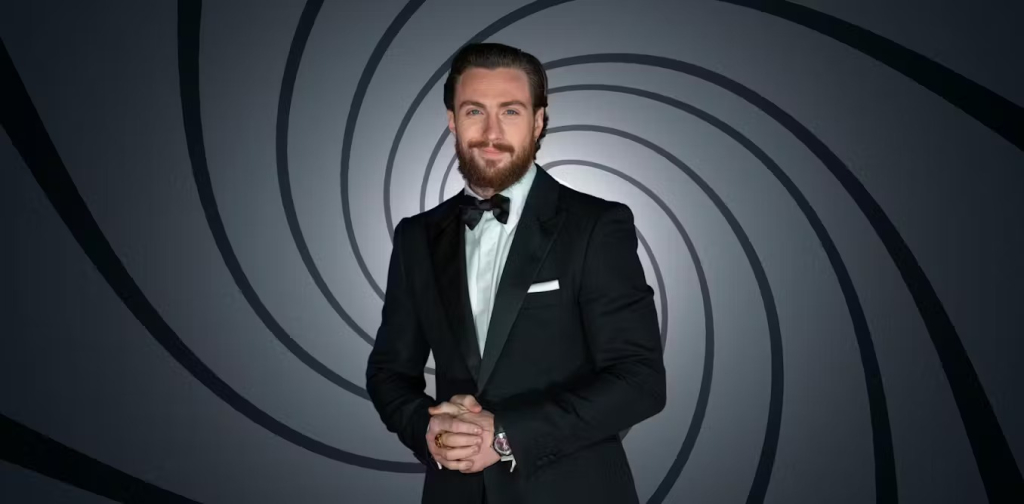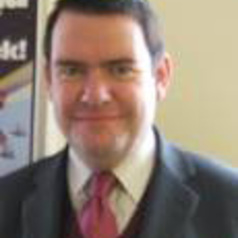More people have walked on the Moon than have played James Bond, so it’s no wonder that the suave secret agent with a licence to kill is one of the most coveted roles in cinema. The casting of a new 007 always grabs the public imagination – even now, when it’s still only a rumour that British actor Aaron Taylor-Johnson has been offered the part.
There have been false rumours in the past. I still remember a non-story that Australian model Finlay Light had been cast as the new Bond in 1986.
Even before social media, the casting of James Bond was always a subject of public intrigue. Before Sean Connery was cast in Dr No (1962), the Daily Express ran a competition to find the public’s choice for the “ideal” Bond. The winner was model Peter Anthony, who won ahead of several other contenders, including stuntman Bob Simmons.
The often-told story that Cary Grant was “offered” the part by the producer Albert “Cubby” Broccoli should be taken with a large dose of salt. Grant’s picture fee at the time was over four times Dr No’s total cast budget of £25,000.
Harry Saltzman, Broccoli’s production partner, told the press that Michael Craig and Patrick McGoohan had been considered. And the United Artists’ archive reveals that Broccoli and Saltzman saw the war picture The Valiant (1962) but reported that “Robert Shaw in this particular film did not impress any of us as being James Bond”. However, Shaw was subsequently cast as an assassin in From Russia With Love (1963).
Two myths have accumulated around Connery’s casting over the years. One is that he was an unknown when he was cast. In fact, Connery was already a well-established television actor and had meaty supporting roles in films such as Another Time, Another Place (1958) and The Frightened City (1961) before he got the call.
Broccoli stated it was Connery’s role in Disney’s whimsical fantasy Darby O’Gill and the Little People (1959) that put the actor on his radar.
The other myth is that Bond’s creator Ian Fleming disapproved of Connery, considering him too rough and ready to play the suave secret agent. However, as revealed in Fergus Fleming’s collection of his uncle’s letters, The Man With the Golden Typewriter (2015), Fleming met – and approved of – Connery.
The writer told his confidante, Blanche Blackwell, that “the man they have chosen for Bond, Sean Connery, is a real charmer – fairly unknown but a good actor with the right looks and physique”.
Next in line
Bond was the box office phenomenon of the 1960s, and when Connery decided it was time to step back after five films, finding a replacement was a drawn-out process. Australian model George Lazenby, a genuine unknown whose only acting experience had been in television commercials for Fry’s chocolate, won the part on account of his ability to stage convincing fight scenes.
On Her Majesty’s Secret Service (1969) is the closest of the adaptations to Fleming’s book, but it didn’t perform as well as previous Bonds at the box office. Lazenby carried the can for its perceived failure: he was destined to be the one-time Bond.
American actor John Gavin, best known for playing Janet Leigh’s boyfriend in Psycho (1960), was signed for Diamonds Are Forever (1971). Gavin had the right sort of looks and physique for the part, and would have played Bond as British.
However, United Artists were determined to get Connery back, and made him an offer he couldn’t refuse: 12.5% of the distributor’s net receipts with an up-front cash advance of US$1,250,000 (£983,050) and an agreement to produce two films of the actor’s choice. No wonder Connery seems to be enjoying himself so much in Diamonds Are Forever. Gavin was paid and released from his contract.
The casting of Live And Let Die (1973) proved controversial. United Artists wanted a household name star and its archive confirms that Clint Eastwood and Paul Newman were approached – but neither were interested.
In the end it came down to a choice between Burt Reynolds or Roger Moore. Saltzman reportedly favoured the former but Broccoli “violently opposed”“ Burt Reynolds. Moore emerged as the compromise choice as he was the only actor on whom they could agree.
Moore was the first established star to be cast as Bond – albeit his stardom was on the small screen, as the dashing gentleman hero of The Saint (1962) and The Persuaders! (1971). He was also the oldest Bond at the point of casting. As one reviewer presciently remarked: "Roger Moore is 45. I predict he could now be playing James Bond into his fifties.” As indeed he did.
Moore’s successor was another television actor, the Irish-born Pierce Brosnan, star of Remington Steele (1982). But when the network refused to release Brosnan from his contract, Timothy Dalton was a late replacement for The Living Daylights (1987) and Licence to Kill (1989). Brosnan eventually got the role that he thought had eluded him nine years later in GoldenEye (1995). In that sense he was the longest “Bond-in-waiting”.
Modern Bonds
Brosnan had been the bookies’ odds-on favourite. In contrast his successor, Daniel Craig, whose biggest role had been in the British gangster film Layer Cake (2004), was a a surprise choice. His casting prompted something of a backlash from fans – that he was too short, too “ugly” and too blonde for Bond.
There was even an online campaign, “Craig Not Bond”. However, the success of Casino Royale (2006), Skyfall (2012) and three other blockbusters silenced the critics. Craig, one of the few Bonds to leave the series at the time of his choosing, retired from Her Majesty’s Secret Service with the five biggest-grossing Bond films in the series’ history.
So, Lazenby and Moore excepted, Bond producers have usually cast an actor on the cusp of stardom. Aaron Taylor-Johnson – if the rumours turn out to be true – would fit that pattern. He’s not an unknown, but he’s not quite a superstar. And at 33 he’d also be the youngest Bond since Lazenby, not an insignificant consideration given that the producers will want to sign the new Bond for at least three films.



 Taylor Swift Returns to TikTok Ahead of New Album Release
Taylor Swift Returns to TikTok Ahead of New Album Release  Hybe Accuses ADOR Subsidiary’s CEO of Breach of Trust
Hybe Accuses ADOR Subsidiary’s CEO of Breach of Trust  Debate: The amorality of ‘Oppenheimer’
Debate: The amorality of ‘Oppenheimer’  Why is China risking US sanctions by arming Russia?
Why is China risking US sanctions by arming Russia?  Vaping now more common than smoking among young people – and the risks go beyond lung and brain damage
Vaping now more common than smoking among young people – and the risks go beyond lung and brain damage  How visas for social care workers may be exacerbating exploitation in the sector
How visas for social care workers may be exacerbating exploitation in the sector  Nintendo, Illumination to Produce 'Super Mario Bros.' Movie Prequel
Nintendo, Illumination to Produce 'Super Mario Bros.' Movie Prequel  The Program: Netflix show exposes the dark side of America’s ‘troubled teens’ schools
The Program: Netflix show exposes the dark side of America’s ‘troubled teens’ schools  Taylor Swift's Exclusive Singapore Concerts Stir Diplomatic Buzz at ASEAN Summit
Taylor Swift's Exclusive Singapore Concerts Stir Diplomatic Buzz at ASEAN Summit  South Africa’s youth are a generation lost under democracy – study
South Africa’s youth are a generation lost under democracy – study  Back to Black: Amy Winehouse biopic reviewed by an alcohol expert
Back to Black: Amy Winehouse biopic reviewed by an alcohol expert  From the coast to the deep sea, changing oxygen levels affect marine life in different ways
From the coast to the deep sea, changing oxygen levels affect marine life in different ways  Sony Pictures, Apollo Global Reportedly In Talks to Jointly Bid for Paramount
Sony Pictures, Apollo Global Reportedly In Talks to Jointly Bid for Paramount 
































